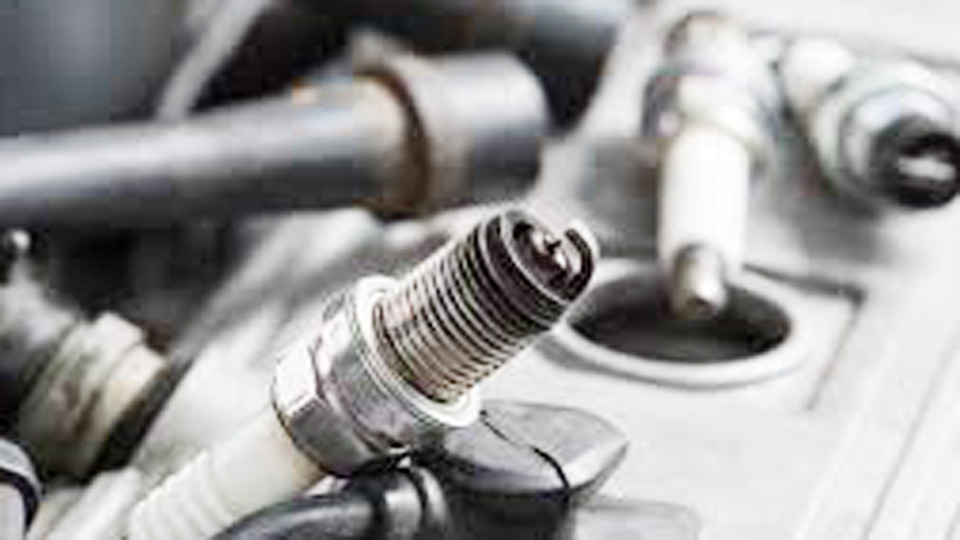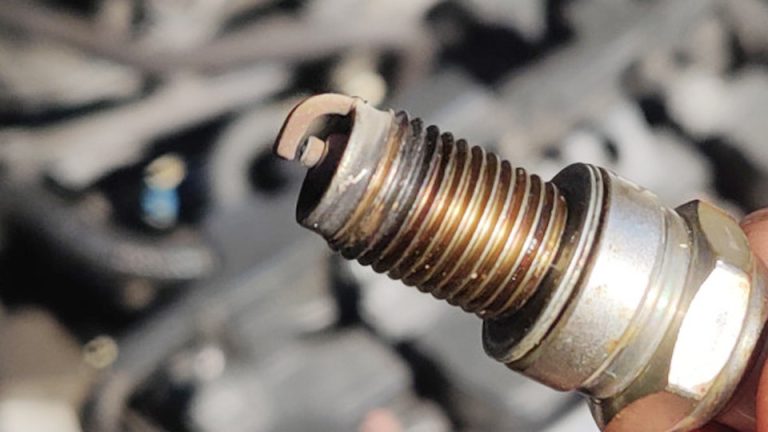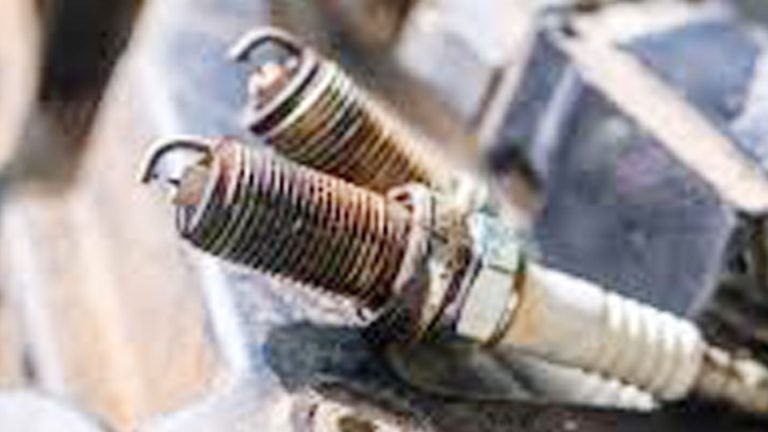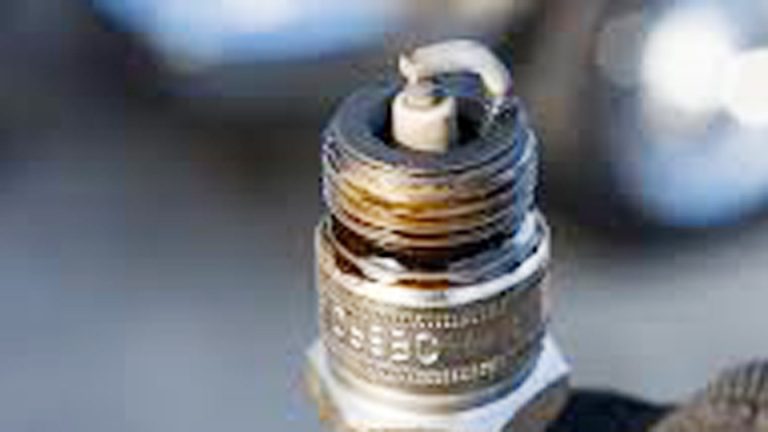I still remember one chilly morning when I hopped into my car, turned the key, and… nothing. No roar, no cough, just silence. At first, I thought it was the battery, but after a bit of digging under the hood, I realized the culprit was something many drivers overlook — the spark plugs. You might be wondering, can spark plugs cause the car not to start? Absolutely. When these little guys are worn, fouled, or damaged, they can’t deliver the spark your engine needs to ignite the air-fuel mixture. The result? Frustrating no-start situations, rough cranking, and wasted time (not to mention potential towing bills).
I’ve seen it happen to daily commuters, weekend road-trippers, and even seasoned DIY mechanics. That’s why understanding how spark plugs impact starting, performance, and fuel economy is key to keeping your car reliable and your wallet happy. Let’s break down how something so small can make the difference between hitting the road and being stuck in the driveway.

Image by petesinc
What Are Spark Plugs and Why Do They Matter?
Spark plugs are the heart of your gasoline engine’s ignition system. They screw into the cylinder head and create a spark that ignites the air-fuel mixture, kicking off the combustion process that powers your car. Without a strong spark, your engine can’t run properly—or at all. I’ve seen this firsthand with my ’98 Mustang, where a worn-out plug left me stranded after a long road trip.
In the USA, where we drive everything from compact sedans to heavy-duty trucks, spark plugs are critical for performance across city commutes, highway cruises, or off-road adventures. A bad spark plug can cause misfires, poor fuel economy, or a complete no-start situation. For DIYers, knowing how these little components work is the first step to diagnosing and fixing issues before they turn into costly repairs.
How Spark Plugs Work
Each spark plug has a metal electrode and a ceramic insulator. When your ignition system sends voltage to the plug, a spark jumps across the gap between the electrodes, igniting the fuel mixture in the cylinder. This happens thousands of times per minute while you’re driving. If the gap is too wide, too narrow, or the plug is fouled, that spark weakens or disappears, leading to engine trouble.
Why They Matter for Your Car
A healthy spark plug ensures smooth starts, efficient fuel use, and optimal power. In cold states like Minnesota, worn plugs can make starting your car a nightmare, especially on freezing mornings. In hot climates like Arizona, heat can degrade plugs faster, leading to misfires during long drives. For enthusiasts tweaking their WRX or F-150, upgrading to performance plugs can boost horsepower, but only if they’re properly maintained.
Common Signs of Bad Spark Plugs
When spark plugs go bad, your car will let you know—if you know what to look for. I’ve learned this the hard way, like when my old Jeep Cherokee started acting sluggish and wouldn’t start after a rainy day. Here are the telltale signs that your spark plugs might be the culprit behind your car’s refusal to start.
Engine Won’t Start or Cranks Slowly
If you turn the key and hear the starter motor cranking but the engine doesn’t fire, bad spark plugs could be to blame. They might not be delivering a strong enough spark to ignite the fuel. This happened to me with a V6 Camry I was fixing for a neighbor—fouled plugs were the issue, and replacing them got it running smoothly.
Rough Idling or Misfires
A failing spark plug can cause your engine to misfire, making it feel like it’s shaking or stuttering at idle. You might notice this when stopped at a traffic light in your Tacoma or Accord. Misfires can also lead to a check engine light, which I’ll cover later.
Poor Acceleration and Power Loss
If your car feels sluggish when you hit the gas, like my old Focus did on a road trip to Colorado, weak spark plugs might not be igniting the fuel efficiently. This is especially noticeable when climbing hills or passing on highways.
Fuel Economy Takes a Hit
Bad plugs can cause incomplete combustion, wasting fuel. If you’re filling up your Suburban more often than usual, it’s worth checking the plugs. I noticed this with a friend’s Durango, where new plugs improved mileage by nearly 2 MPG.
Can Spark Plugs Really Stop Your Car from Starting?
Yes, spark plugs can absolutely prevent your car from starting. If they’re worn out, fouled, or damaged, they won’t create the spark needed to ignite the air-fuel mixture. In my experience, this is one of the most common reasons for no-start issues in older cars or vehicles that haven’t been maintained. Let’s break down why this happens and how to confirm it’s the plugs.
Why Spark Plugs Cause No-Start Issues
When spark plugs fail, they either produce a weak spark or no spark at all. This can happen due to:
Carbon Fouling: Deposits from incomplete combustion coat the plug, blocking the spark. Common in stop-and-go city driving in places like Los Angeles.
Oil Fouling: Leaky engine seals let oil into the combustion chamber, fouling the plugs. I saw this in a high-mileage Explorer.
Worn Electrodes: The electrode gap widens, weakening the spark. This is typical in cars driven hard, like a tuned Civic Si.
Cracked Insulators: Heat or impact can crack the ceramic, shorting out the spark. Dropping a plug during installation (yep, I’ve done it) can cause this.
How to Confirm It’s the Spark Plugs
Before you assume it’s the plugs, rule out other culprits like a dead battery or faulty starter. Here’s a quick diagnostic process I use in my garage:
Check the Battery: Ensure it has at least 12.6 volts with a multimeter. A weak battery can mimic spark plug issues.
Listen to the Starter: If it cranks strongly but the engine doesn’t start, focus on the ignition system.
Inspect the Plugs: Remove one or two plugs (more on how below) and look for fouling, wear, or damage.
Test for Spark: Use a spark tester to see if the plug is firing. No spark? The plug or ignition coil could be bad.
How to Inspect and Replace Spark Plugs
If you suspect your spark plugs are causing your car not to start, inspecting and replacing them is a straightforward DIY job for most vehicles. I’ve done this on everything from a Honda CR-V to a Chevy Silverado, and it’s usually a quick fix. Here’s a step-by-step guide tailored for beginners and seasoned gearheads alike.
Tools You’ll Need
- Socket wrench with spark plug socket (usually 5/8″ or 13/16″)
- Ratchet extension (for tight spaces)
- Torque wrench (to avoid over-tightening)
- Spark plug gap tool
- Anti-seize compound (optional, for easier future removal)
- Dielectric grease (for coil connections)
- Safety glasses and gloves
Step-by-Step Guide to Replacing Spark Plugs
Park and Cool the Engine: Always work on a cold engine to avoid burns. Park on a flat surface and disconnect the battery for safety.
Locate the Spark Plugs: They’re typically under the ignition coils or wires on top of the engine. On my F-150, I had to remove the coil packs to access them.
Remove the Old Plugs: Use a spark plug socket to gently unscrew each plug. Note their condition—black soot, oil, or wear can indicate other engine issues.
Check the Gap on New Plugs: Use a gap tool to ensure the new plugs match your car’s specs (check your owner’s manual). For example, my Mustang needed a 0.054-inch gap.
Install New Plugs: Apply a thin layer of anti-seize to the threads (don’t overdo it) and hand-tighten before torquing to spec (usually 10-20 ft-lbs).
Reconnect Coils or Wires: Apply dielectric grease to coil connections to prevent corrosion, especially in humid areas like Florida.
Test the Engine: Reconnect the battery, start the car, and listen for smooth operation.
Warning: Don’t overtighten spark plugs—you can strip the threads in the cylinder head, leading to a costly repair. I learned this the hard way on a friend’s old Corolla.
Choosing the Right Spark Plugs
Not all spark plugs are created equal. Here’s a quick comparison of common types for US drivers:
| Type | Best For | Pros | Cons |
|---|---|---|---|
| Copper | High-performance cars, older models | Cheap, good conductivity | Short lifespan (20,000 miles) |
| Platinum | Daily drivers, modern sedans | Longer life (60,000 miles) | More expensive than copper |
| Iridium | Luxury cars, high-mileage vehicles | Longest life (100,000 miles) | Higher cost, overkill for some cars |
| Double Platinum | Vehicles with waste-spark systems | Durable, good for specific engines | Not ideal for high-performance |
For my daily-driven Accord, I stick with iridium plugs for longevity. For a performance-tuned WRX, copper or platinum might give better spark strength. Check your owner’s manual or ask at your local auto parts store for recommendations.
When Spark Plugs Aren’t the Problem
Sometimes, spark plugs aren’t the issue, even if your car won’t start. I’ve chased my tail on this before, like when I thought the plugs were bad on my brother’s Tahoe, but it was actually the ignition coil. Here are other common culprits and how to check them.
Faulty Ignition Coils or Wires
Ignition coils amplify the battery’s voltage to create the spark. If a coil fails, the plug won’t fire, even if it’s brand new. Test coils with a multimeter or swap them between cylinders to see if the misfire follows. Bad spark plug wires (in older cars) can also weaken the spark—look for cracks or wear.
Fuel Delivery Issues
No fuel, no combustion. A clogged fuel filter, failing fuel pump, or empty tank (yep, it happens) can mimic spark plug issues. Listen for the fuel pump’s hum when you turn the key to the “on” position. I had this issue with a Dodge Ram where a clogged filter caused a no-start.
Dead Battery or Starter
A weak battery or failing starter can prevent the engine from cranking properly. Check battery voltage (below 12.4 volts is suspect) and listen for a single click when starting—that’s often a bad starter. I fixed this on a neighbor’s Malibu by jumping the battery first to rule it out.
Timing or Sensor Problems
A bad crankshaft or camshaft sensor can disrupt spark timing, causing a no-start. This happened to my old Jetta, where a $50 sensor replacement fixed it. A check engine light with codes like P0335 (crankshaft sensor) can point you in the right direction.
Maintenance Tips to Prevent Spark Plug Issues
Preventing spark plug problems is easier than fixing them after your car leaves you stranded. Based on years of driving across the USA’s highways and backroads, here are my top tips for keeping your plugs in top shape.
Follow Your Maintenance Schedule
Most cars need new spark plugs every 30,000 to 100,000 miles, depending on the type. Check your owner’s manual. In dusty areas like Texas or salty coastal regions like California, inspect them more often. I set a reminder every 50,000 miles for my Accord to avoid surprises.
Use Quality Fuel
Low-quality gas can lead to carbon fouling, especially in stop-and-go traffic. Stick to Top Tier gas brands, which have better detergents. I noticed a difference in my F-150’s performance after switching to a reputable station.
Check for Engine Leaks
Oil or coolant leaks can foul plugs. Look for puddles under your car or a burning smell. When I helped a friend with their Outback, we found a valve cover gasket leak fouling the plugs—fixing it saved them from repeated replacements.
Monitor Driving Conditions
Hard driving, like towing in a Silverado or spirited runs in a Miata, wears plugs faster. If you’re in extreme climates—think Chicago winters or Phoenix summers—check plugs annually. Heat and cold stress the ignition system.
Upgrading Spark Plugs for Performance
For car enthusiasts, upgrading spark plugs can squeeze extra performance out of your engine. I’ve experimented with this on my Mustang, and the difference is noticeable. Here’s when and why to consider performance plugs.
When to Upgrade
If you’ve modified your car with a cold air intake, exhaust, or tune, standard plugs might not keep up. Performance plugs, like iridium or multi-electrode designs, deliver a stronger spark for better combustion, especially in turbocharged cars like a Focus ST or high-revving engines like a Honda S2000.
Benefits of Performance Plugs
- Improved Throttle Response: A stronger spark means faster combustion, which I felt in my Mustang after switching to iridium plugs.
- Better Fuel Efficiency: More complete combustion reduces waste, saving gas on long drives.
- Enhanced Durability: High-end plugs last longer under stress, ideal for track days or towing.
Warning: Don’t upgrade without matching your engine’s needs. Overspending on iridium plugs for a basic commuter car like a Corolla is often a waste.
Conclusion
Spark plugs might be small, but they’re a big deal when it comes to keeping your car running. Whether you’re a DIY mechanic in your garage, an enthusiast chasing horsepower, or just trying to get your family SUV to start on a cold morning, understanding how spark plugs work and what to do when they fail is empowering. From diagnosing a no-start issue to replacing plugs yourself, you now have the tools to tackle this common problem.
Keep a spare set of plugs and a spark plug socket in your trunk for emergencies—you’ll thank yourself when you’re stuck on a backroad. Get out there, pop the hood, and keep your ride running smoothly.
FAQ
Can bad spark plugs drain my car’s battery?
Bad spark plugs don’t directly drain the battery, but they can cause the starter to work harder, which pulls more power. If your engine doesn’t start after repeated cranking, the battery can weaken. Check plugs first to avoid unnecessary battery replacement.
How often should I replace spark plugs?
Most cars need new plugs every 30,000 to 100,000 miles, depending on the type (copper, platinum, or iridium). Check your owner’s manual and inspect them annually if you drive in harsh conditions like dusty or salty areas.
Can I drive with a bad spark plug?
Driving with a bad spark plug can cause misfires, poor fuel economy, or engine damage over time. If your car is running rough, replace the plugs as soon as possible to avoid bigger issues.
What’s the difference between cheap and expensive spark plugs?
Cheap copper plugs are fine for older or basic cars but wear out faster (20,000 miles). Expensive iridium or platinum plugs last longer (up to 100,000 miles) and perform better in modern or high-performance engines. Choose based on your car’s needs.
Can spark plugs cause a check engine light?
Yes, bad spark plugs can trigger a check engine light, often with codes like P0300 (random misfire) or P0301 (cylinder 1 misfire). Use an OBD-II scanner to confirm, and inspect plugs if misfire codes appear.



